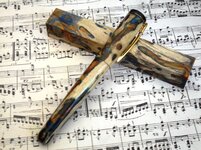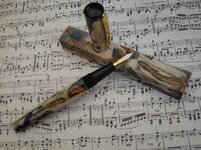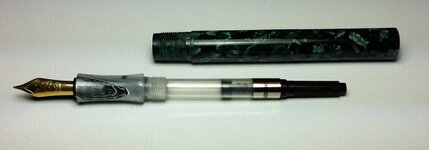Gilrock
Member
I've been gathering my taps, dies, and drill bits and doing some practicing making threads. I've read through several threads on the forum and the library and there's a lot of great info. My main reference has been George's tutorial for making a fountain pen section. I've decided to use #5 Bock nibs and feed housings. I've ordered some converters. I have the tap for the #5 housing, a 9mm x 0.75 tap and die, a 12mm x 0.8 triple tap and die. But as a complete newbie I haven't found a few key pieces of info I think I need. I'm sure I can figure this all out with experimentation and destroying a bunch of material but I'm sure it would help a lot of us wanting to make our first kitless if we had a good starting point so here's few things I haven't found if anyone can help:
Assuming you are making a section that will thread into the body with cap threads on the body:
How do you know how long to make the section piece?
Whats a good length for the tenon on the section for the part that threads into the body?
What's a good length for the threads on the body that holds the cap?
If I have 12mm internal threads whats a good cap diameter so it's not too thin and prone to cracking?
Thanks,
Gil
Assuming you are making a section that will thread into the body with cap threads on the body:
How do you know how long to make the section piece?
Whats a good length for the tenon on the section for the part that threads into the body?
What's a good length for the threads on the body that holds the cap?
If I have 12mm internal threads whats a good cap diameter so it's not too thin and prone to cracking?
Thanks,
Gil





